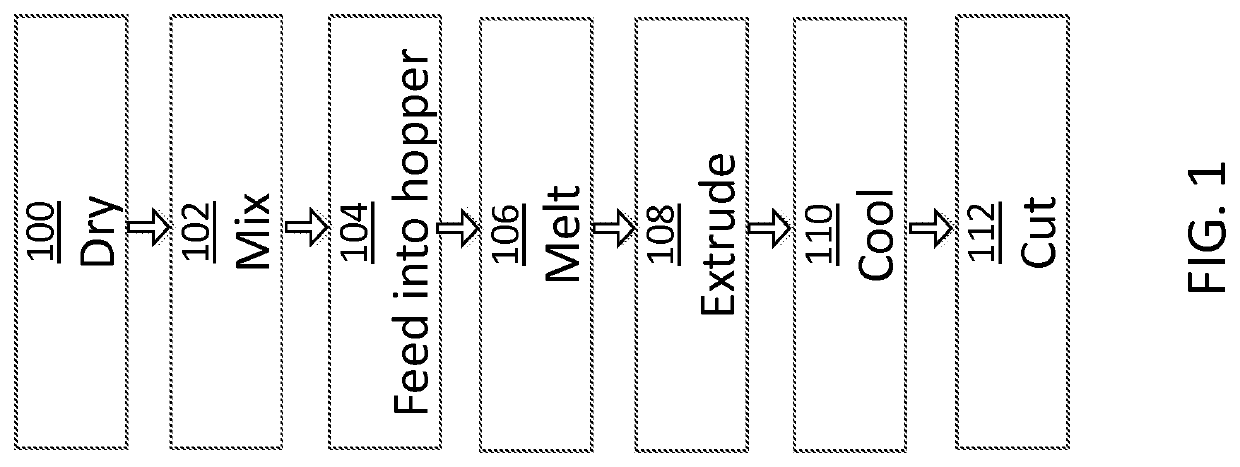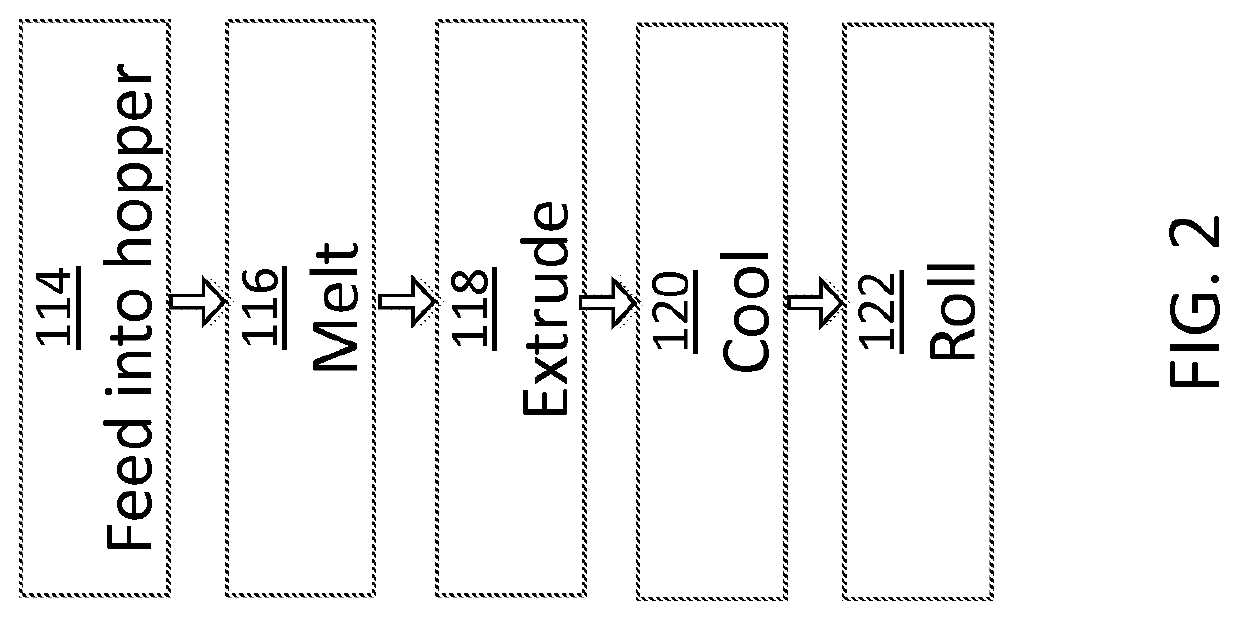Amorphous polyaryletherketone and blends thereof for use in additive manufacturing
a polyaryletherketone and polymer technology, applied in the direction of additive manufacturing processes, manufacturing tools, instruments, etc., can solve the problems of inferior mechanical properties, poor heat resistance, relative poor chemical resistance, etc., and achieve high viscosity and melt flow, desirable rheological effect, and high pressure for
- Summary
- Abstract
- Description
- Claims
- Application Information
AI Technical Summary
Benefits of technology
Problems solved by technology
Method used
Image
Examples
Embodiment Construction
[0026]Although the illustrative embodiment is directed to the use of amorphous PEEK in conjunction with FFF printing, any polyaryletherketone (PAEK) that can be synthesized to exhibit a predominantly amorphous morphology can be used to print production-quality parts.
[0027]The crystallization of polymers is a process associated with partial alignment of their molecular chains. The fraction of the ordered molecules in a polymer is characterized by the degree of crystallinity, which typically ranges between 10% and 80% For this reason, crystallized polymers are often called “semi-crystalline,” A polymer with less than 10% crystallinity is considered to be “amorphous.” Degree of amorphous is the inverse of degree of crystallinity. For example, a polymer with a crystallinity of 5% has a greater degree of amorphousness than a polymer having a crystallinity of 9%.
[0028]The degree of crystallinity is estimated by different analytical methods, such as density measurement, differential scanni...
PUM
| Property | Measurement | Unit |
|---|---|---|
| degree of crystallinity | aaaaa | aaaaa |
| degree of crystallinity | aaaaa | aaaaa |
| crystallinity | aaaaa | aaaaa |
Abstract
Description
Claims
Application Information
 Login to View More
Login to View More - R&D
- Intellectual Property
- Life Sciences
- Materials
- Tech Scout
- Unparalleled Data Quality
- Higher Quality Content
- 60% Fewer Hallucinations
Browse by: Latest US Patents, China's latest patents, Technical Efficacy Thesaurus, Application Domain, Technology Topic, Popular Technical Reports.
© 2025 PatSnap. All rights reserved.Legal|Privacy policy|Modern Slavery Act Transparency Statement|Sitemap|About US| Contact US: help@patsnap.com


